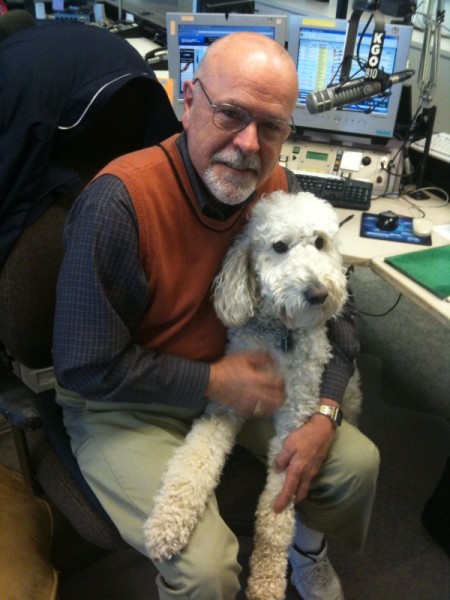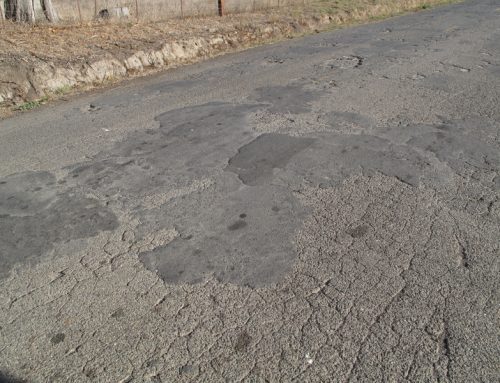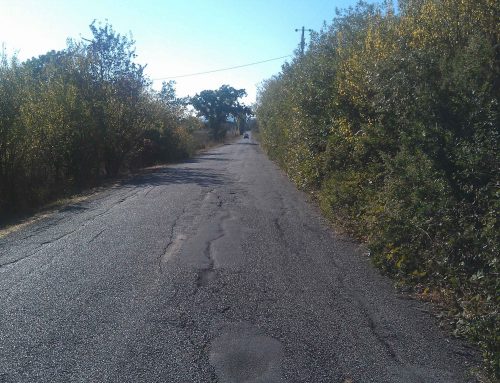After more than three decades of keeping his eye on Bay Area traffic congestion and guiding commuters through it, KGO radio’s Stan Burford is calling it quits.
“I’m 69 and I turn 70 in December,” the dean of Bay Area traffic reporters explained when asked why he’s retiring.
His 51-year career in radio and TV broadcasting — the last 32 at KGO radio 810 AM — ends Friday.
When he started his traffic reports, Sonoma County traffic wasn’t on the radar. But in the last 20 years or so, he said, KGO started taking the greater Bay Area traffic more seriously, realizing that listeners were facing congestion in the outer region, from Tracy to Solano to Sonoma County. At one point, KGO shared a traffic plane in Santa Rosa with KZST radio.
Highway 101 through “the Novato Narrows was driving people crazy getting down into Novato, and it still is,” Burford said.
Burford, who along with wife drive up into Sonoma County, visiting friends along the Russian River, says he loves the widening of 101 to six lanes north of Petaluma but wishes Caltrans already had tackled expanding the Petaluma River Bridge and Novato Narows.
“It’s going to happen,” he said of those projects. “It just hasn’t yet.”
Part of the current congestion may be eased with opening of the SMART train, he said. He said he’s a fan of SMART but wishes it was using 21st Century technology to operate, such as magnetic levitation, rather than the “old tools” of wheels and rails.
Burford started his broadcast career in 1961 at age 18 at a tiny San Francisco FM station, KBCO, where he served as a DJ, technician and more. In the years since, he’s worked for a total of five radio stations, 10 TV stations and four media production companies, sometimes holding two jobs at a time.
In 1963, he joined KSFO — “they called themselves the World’s Greatest Radio Station and, frankly, they were” — as its traffic reporter. That was the start of his legendary career of being a commuter’s best friend on the air and in the air.
He moved into the TV half of the broadcasting industry in 1966, taking a management job, and joined KGO-TV-Channel 7 in 1976. After a while there, he started helping sister station KGO radio with its traffic reports. In 1980, amid “some politics” at KGO-TV, Burford had to make a choice: Working full time in radio or TV. He picked radio and became the station’s full-time traffic reporter.
He worked “insane hours” for years — 5 to 9 a.m. and 4 to 7 p.m. Monday through Friday, with 28 years making his traffic reports while flying in a KGO plane or helicopter. He wasn’t the pilot, although he trained to be one so that he could take over in emergencies.
When KGO brought him back to the ground in the studios, he welcomed the change, noting that while flying he had three priorities: Looking out for other aircraft, looking for places to land in emergencies and looking at traffic on the highways — in that order.
He eventually starting working some from home after setting up a studio at his San Rafael home. It still allowed him to remain in contact with KGO’s six aircraft — “we had more aircraft than a small country,” although there are none now; the CHP; and commuters, including a couple of regulars from Sonoma County, calling in updates. At the start of this year, he shifted to only morning reports, although that still required him getting up at 3 a.m.
He believes he’s the last reporter actually employed by a Bay Area radio station for traffic reports. Other stations rely on traffic-reporting companies for their updates, although he noted KGO does too for some. KGO is hiring another Bay Area traffic reporter to replace him.
Like any driver, often tooling around in a Honda Odyssey minivan, Burford has his pet peeves about other drivers:
–Cellphones. He doesn’t mind if drivers go hands-free but holding a phone is way too distracting.
–Tailgating. “I’ll get out of your way. You don’t have to park in my trunk.”
In his retirement, Burford said he has no big plans. He’ll do a little traveling with his wife and he’ll help her at the nonprofit Ceres Community Project -Marin County, of which she is co-director and at which high school-age youths learn how to cook with the food being distributed to members of the community in medical recovery.
As for the end of his radio career, he says, “I’m happy to have been there. I had a great time. Now, it’s someone else’s turn to have a great time.”
———————-
Follow the Road Warrior on Twitter via @PDRoadWarrior




